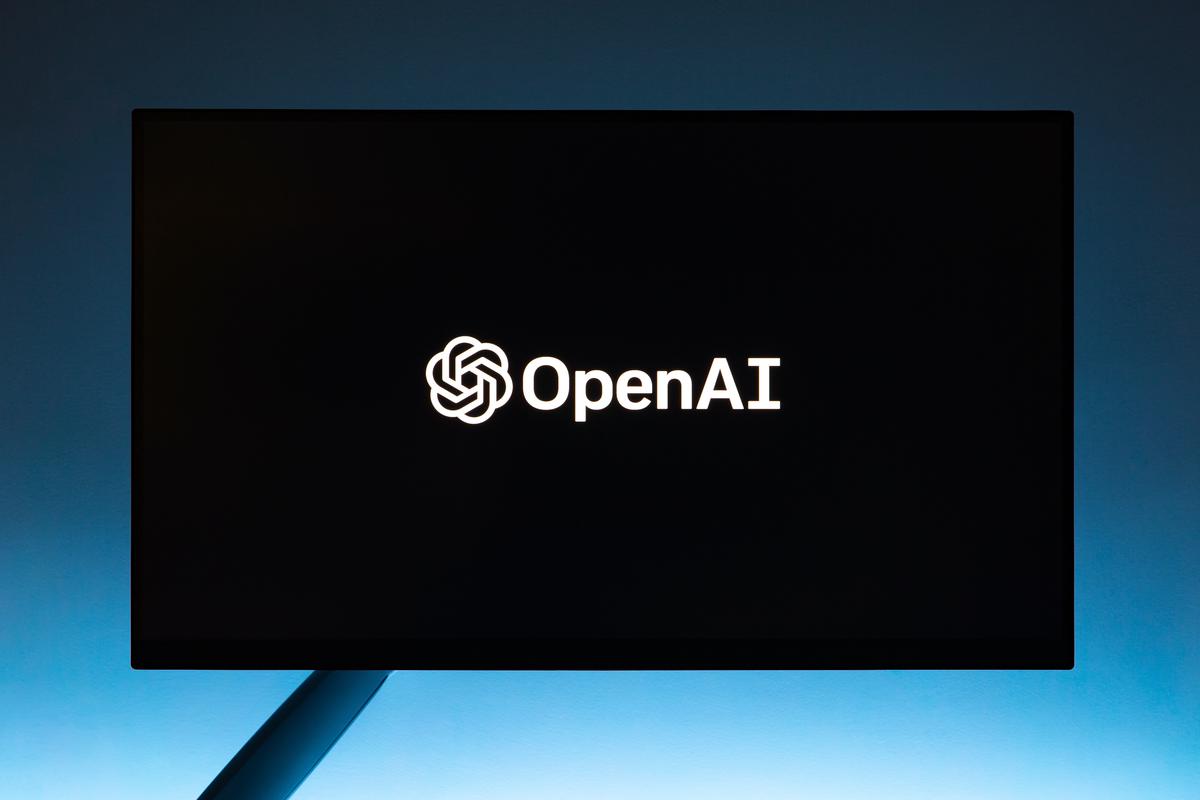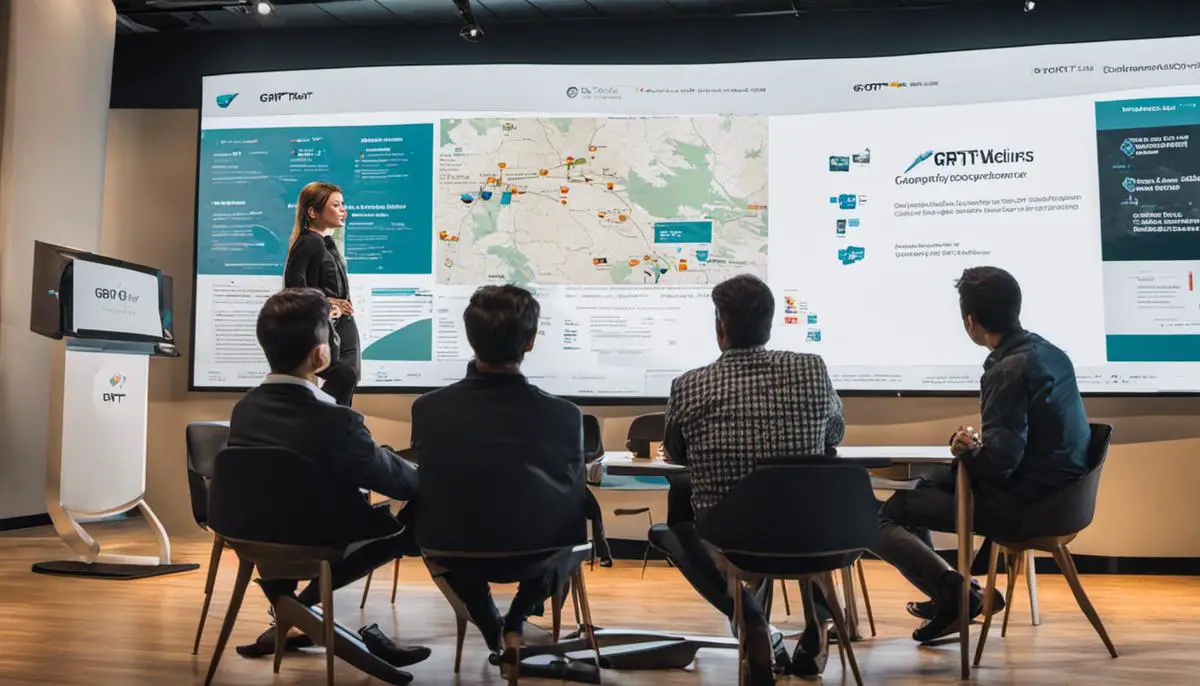As we propel forward within the digital age, the relentless pursuit of simplifying and enhancing web development continues unabated. We’re now witnessing an era where artificial intelligence, particularly Generative Pre-training Transformer (GPT) models, pave the way towards achieving this goal. This examination begins with an understanding of these formidable AI tools, tracing their roots, understanding their mechanics, and exposing their transformative potential in the realm of web development. From the pioneering GPT-1 model to its evolved successors, GPT-2, and GPT-3 – each model embodies a significant progression, employing sophisticated Natural Language Understanding capabilities, thus emerging as key assets for web developers. This journey culminates in a thoughtful comparison of these models, taking into account their individual strengths, flaws, narratives, and their adoption in various facets of web development.
Understanding GPT Models
GPT Models: A Revolutionary Leap Forward in Web Development
Grafting new advancements onto the rich tapestry of technology has consistently redefined the landscape of web development. Among the latest entrants in the arena are Generative Pre-trained Transformer (GPT) Models that are taking the tech world by storm, thanks to their capabilities of supplementing, or even completely cutting out manual labor in a multitude of tasks. A revolutionary leap forward, GPT Models are undeniably at the forefront of machine learning, artificial intelligence (AI), and web development.
In essence, GPT Models are a participant in the broader umbrella of AI and machine learning, specifically falling within the progressive domain of Natural Language Processing (NLP). A GPT model’s fundamental promise is understanding, processing, and generating human language with unprecedented agility and precision. However, their application is not just confined to tasks such as translation, chatbots, and search algorithms; GPT Models are now making inroads into the web development space.
GPT Models, with their edge of advanced machine learning, function excellently well in web development for a multitude of reasons. One primary reason is their competence in generating code. Recently, the machine learning community has witnessed a clear shift toward transformer-based models instead of rule-based models for code completion and generation. By fostering intelligent code completion, GPT Models undoubtedly prove to be a godsend for developers by automating and significantly reducing the time spent on mundane coding tasks.
By harnessing large-scale machine learning models such as GPT-3, developers are given a powerful tool to automate complete coding tasks – everything from minor bug fixes to entire software development projects. Leveraging the power of AI, GPT Models help tackle complex problems, find efficient solutions, and create a more dynamic and engaging user experience – all while saving time and ensuring a higher standard of precision.
Another promising feature of GPT models is their ability to promote a more interactive, user-friendly interface. With AI-powered tools, it has become possible to translate simple English instructions into complex code. This means a user without knowledge of a coding language can interact with the system efficiently, thus making the interface more accessible and inclusive.
From an SEO perspective, the content generated by GPT Models is hard to ignore. It offers an excellent opportunity to create SEO-friendly content without human intervention, thus boosting the website’s organic reach and attracting more traffic – a much-needed shot in the arm for any brand’s web presence.
However, as with any emerging tech trend, the application of GPT Models in web development also comes with challenges, such as potential misunderstanding of user input or the possibility of unanticipated outcomes due to inherent biases embedded in the training data. But solid efforts in the AI community are being made to address these issues to create a more reliable, transparent, and robust AI system.
It’s clear that GPT Models have a promising role to play in the realm of web development. The sheer efficiency, scalability, and accessibility they bring to the table are set to further redefine and revolutionize the future of web development. The emergence of GPT Models is an exciting breakthrough, offering a glimpse into a future where AI might not just assist, but lead and innovate in the field of web development.

GPT-1: The Original Game Changer
Although GPT-3 has hogged the limelight recently, it’s GPT-1 – the Maker’s Model – that initially broke ground. Igniting the idea that language models could enhance web-based applications, GPT-1 laid the foundations for what evolved into a significant game-changer in the world of web development.
One of the innovating aspects GPT-1 brought into the fold was its open-ended nature. Unlike traditional language models, GPT-1 had the ability to generate diverse and surprising outputs. Its ingenious architecture allowed it to handle a wide range of tasks, without needing task-specific data during fine-tuning. This meant more simplified data-driven web applications, even though GPT-1 wasn’t specifically designed to write code or automate tasks. This was a revelation, leading the path for future models to take on arduous programming chores.
The ground-breaking impact of GPT-1 in the domain of SEO is also worth mentioning. GPT-1 was not just desiged to generate legible content; it was designed to structure that content in such a way that search engines could grasp it with ease. While using GPT-1 to generate content might not have lived up to web developers’ highest expectations, it gave a glimpse into future where AI-generated content could rank highly on search engine result pages, turning the tech community’s heads.
Yet, what really marked GPT-1 as a groundbreaker was the way it approached machine learning. Instead of focusing on hand-crafting features or relying heavily on domain-specific knowledge, GPT-1 pushed the boundaries of what was possible by honing in on the process of learning from large and diverse data sources. It proved that the key to effective Natural Language Processing was not necessarily creating more specialized algorithms, but rather improving the process of learning from the vast, ubiquitous and freely available data across the web.
But it wasn’t just about the data – GPT-1 set a precedent in terms of model architecture. Low-density models were the past; with its transformer-based approach, GPT-1 showed that powerful language model generation is in scaling up. However, acknowledging potential challenges, it also marked the path towards more robust and trustworthy AI development with a focus on model transparency and risk mitigation.
Indeed, GPT-1 was the stepping stone towards a new era of web development, underlining the synergistic relationship between NLP, AI, and web-based applications. It was the springboard from which successors like GPT-3 took off, indicating endless possibilities and future breakthroughs in the field. As such, its role cannot be understated in the journey towards automation and efficiency in web development.

The Evolution: GPT-2 and GPT-3
Continuing with the discussion on GPT Models, it’s crucial to then focus on GPT-2 and its groundbreaking nature. While maintaining its predecessor’s open-ended nature, it significantly leapfrogged over GPT-1 by being twice as large and trained on ten times more data. A testaments to the old adage: “Practice makes perfect”. By exponentially expanding its knowledge base, GPT-2 has significantly improved its text completion, translation, and summarization capabilities.
This improvement is beneficial for web developers in cutting down operational time and energy. Undeniably, GPT-2 accelerated the process of code-related tasks by providing solutions or suggesting corrections. Furthermore, it has the unprecedented ability to mimic style from a given sample, promoting brand consistency across influential platforms.
Shifting attention to the latest protagonist in this AI saga; GPT-3 takes the stage. It’s a manifestation of the phrase: “Go big or go home”. Sports a whopping 175 billion machine learning parameters. This tenfold increase from GPT-2 is instrumental in refining its language processing skills to a point of near-perfect human-like text.
Moreover, it dives into the complex realm of sentiment analysis. GPT-3 discerns emotional tone, like excitement or frustration, from written content. Crucial for customer service support in web development, tweaking website interactions based on visitor sentiment can greatly enhance user experience.
Quantity often implicates loss in quality. But, OpenAI’s GPT-3 begs to differ. It is generating quality long-form content like blog posts or articles, making it a boon for content-heavy websites. Web developers harness GPT-3 to populate their websites with rich, engaging, and SEO-friendly content without the time-consuming and resource-draining process of constant manual content creation.
Then comes the pivotal role of API in GPT-3. This feature presents the opportunity for developers to integrate this innovative technology directly into their platforms. With continuous updates and improvements, this integration enhances the fluidity and efficiency of software development tasks.
In a nutshell, GPT-2 set the stage. It improved upon GPT-1 and hinted at the potential of these AI models. GPT-3, with its advanced capabilities, surpassed its predecessor, revolutionizing how web development is approached. Here’s to the curious excitement of what the next iterations will bring to the table. Who’s to say what advancements the future versions of GPT Models will bring? But they’ve definitely proven the sky is the limit when it comes to AI and web development.
It’s clear: in the world of web development, the GPT series serves as a force for elevation, not disruption. This pioneer reigns supreme in ushering an era where code takes a backseat, making way for collaborative innovation by machines and humans alike. Buckle up for a ride into the future. It’s driven by GPT models, and it promises to be a journey like no other. Keep the tech in check, fellow enthusiasts. This is just the beginning.

Comparing GPT Models: Aide-Mémoire
As the web development industry continues to break boundaries, now emerges a great spectacle – the GPT Models. We’ve previously covered the basics of the GPT Models and what they have brought to the web development table, and now we’re going to delve deeper into the individual capabilities of GPT-1, GPT-2, and GPT-3, and their distinct uses in web development.
When it comes to GPT-1, it’s the very cornerstone of the GPT lineage. Its primary purpose lies in language processing, and it does a decent job in understanding and predicting text. Its capabilities can be harnessed in web development, such as making more dynamic and personalized user interfaces. It learns through unsupervised learning, which in a sense, gives it freedom to learn from various datasets.
GPT-2, however, is an upgrade we didn’t know we needed. It spins the language processing wheel a notch higher, offering better text completion, translation, and summarization. The leap from GPT-1 to GPT-2 opens up fresh avenues in web development, including novel features in web applications, user interface text generation, and better overall user experience.
But the game-changer is undeniably GPT-3. It boldly steps around the predictive limitations of GPT-2, with a mammoth 175 billion machine learning parameters that blows predecessors away in complexity, depth, and accuracy. GPT-3 raises the bar in language processing and web development; its sentiment analysis is nothing short of groundbreaking, providing an intuitive understanding of human communication.
Moreover, GPT-3’s ability to generate long-form content paves the way for a new echelon in automated content creation. It makes a writer’s algorithm feel like a human behind a screen, a novelty that can skyrocket site engagement and conversions. To crown it all, GPT-3’s architecture is API-integrable, making it a handy tool in web development without the dense complexity of machine learning.
Suffice to say, the future of GPT Models is exhilarating. Predictions include even more complex language models that embody deep contextual understanding and more integration options for web development. As much as GPT models pursue the forefront of AI and machine learning, they also present plausible solutions to web development predicaments and open up uncharted innovative terrains. The horizon for GPT models is vast, and for web development, it’s a digital vista worth exploring.
Staying ahead of the curve with GPT models isn’t just about basking in tech glory. It’s about realizing the potential of AI, its utility, its versatility, its efficacy, and more importantly, its bearing on revolutionizing how web development aligns with the future. When we look at where the GPT models have come from, where they are now, and their future trajectory, we cannot help but marvel at this powerful technology and its immeasurable potential in transforming web development experiences.
Stay tuned into GPT models. Let’s strive to harness their power and capability to build a path towards a tech-led future defined by jotting less code and doing more development. After all, in the world of web development, it is always a game of evolution, and with GPT models, we are at the precipice of AI-redefined innovation.

Photo by andrewtneel on Unsplash
The Future of GPT Models in Web Development
Harnessing the power of Generative Pretrained Transformers (GPT) Models can greatly elevate the game in custom web development. Though already touched on, let’s explore further how developers can capitalize on GPT’s potential.
Firstly, GPT models hold immense potential in streamlining the design process. As they can generate next-word predictions based on probabilities, this tool can foster innovative UI/UX designs. For, it can predict color correlations and font styles that the audience might resonate with. Hence, it can offer not just human-like interaction but even an intuitive and engaging user experience.
Furthermore, GPT Models can revolutionize personalization in web development. With models like GPT-3, web developers can better understand user preferences and behaviors. What’s fascinating is how it paves the way for creating hyper-personalized user experiences. From tailored content, personalized dashboards, to interactive elements, GPT brings an unprecedented dynamism to web design.
Sound business decisions will also be backed by GPT infused business analytics. With GPT’s language processing prowess, web developers can extract customer sentiment towards brands and products directly from their opinionated content. This integration will enable businesses to promptly respond to real-time feedback and highlight valuable insights that drive conversion targets.
Moreover, GPT-3’s impressive language programming skills have opened new vistas in low-code and no-code platforms. Its top-notch capacity to generate code with simple English commands is anticipated to transform the web development process for novices and experts alike.
Notably, future iterations of GPT models may extend their abilities beyond language processing. They could bring about advancements in visual AI, making them capable of generating images or diagrams based on the provided description. This step will further smooth the web development process and enable more creativity in the digital arena.
Lastly, GPT Models will considerably beef up cybersecurity. By leveraging their capabilities in predicting anomalies and identifying threats, GPT models can play a vital role in safeguarding web platforms against potential cyber attacks. Plus, their continual learning will bolster security measures and design much more robust firewalls.
Undoubtedly, GPT Models in web development are not just promising but seem to grow indispensable. As they continue to advance, it is envisioned that users will have significantly better experiences, and web developers will find their tasks becoming progressively simpler. They’re reshaping the reality of web development, transforming it into an easy, efficient and exciting experience.

Peering over the horizon and into the future of web development, we stand on the threshold of unimagined possibilities fostered by enhancements and adaptations of GPT models. Balancing this vision with an appraisal of possible challenges equips us with a sensitized perspective on AI-powered web development. The transformative journey of GPT-1 to GPT-3 eloquently lays the foundation for speculation on what’s next. Each iteration has not only built upon its precursor’s capabilities, but has also broadened the horizon of applicability within web development. A careful look at this evolution feeds our anticipation of more sophisticated models focused on overcoming current limitations and innovating even richer web experiences. Cut to the not-so-distant future, and we may well be witnessing the dawn of a new generation of web development shaped by AI models more powerful than we can presently conceive.
